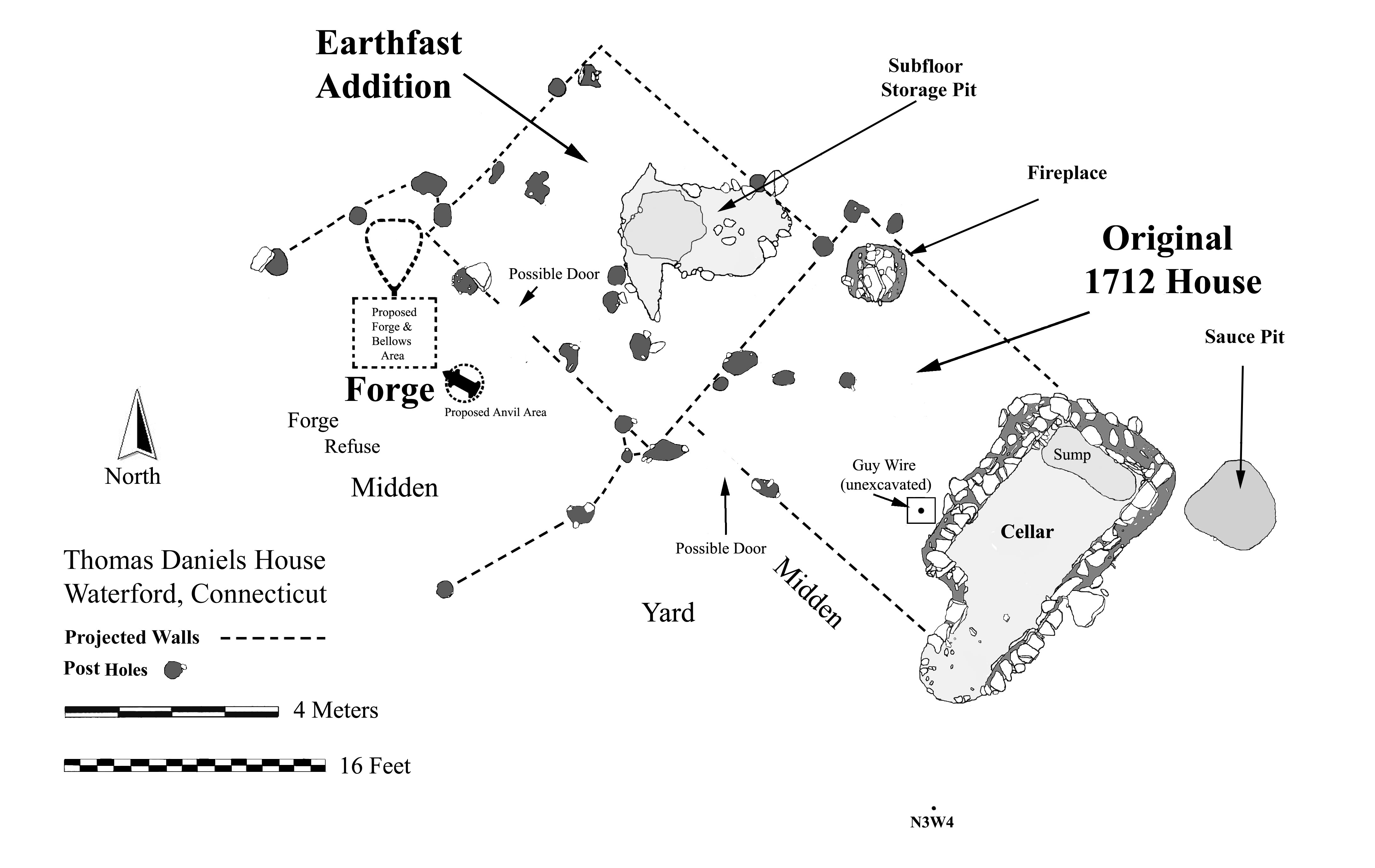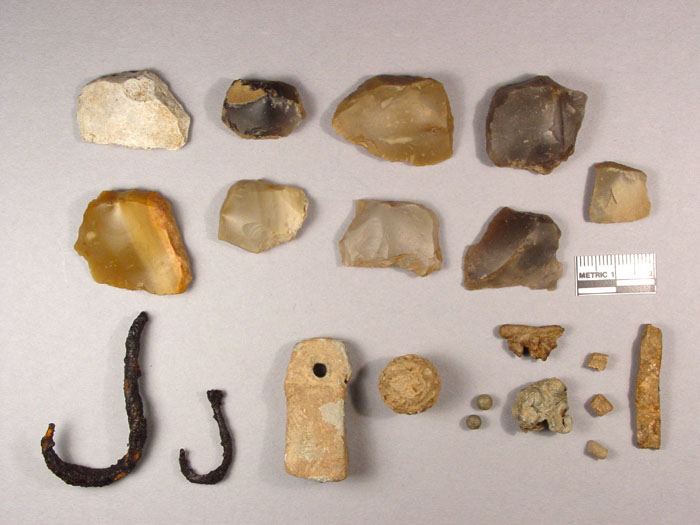
Gunflints, fish hooks, a lead sinker, a musket ball, two Rupert’s shot, two cast shot wasters, three tumbled shot and a tumbled shot blank. Click to enlarge.

|
|
Gunflints, fish hooks, a lead sinker, a musket ball, two Rupert’s shot, two cast shot wasters, three tumbled shot and a tumbled shot blank. Click to enlarge. |
Along with foodways activities, numerous types of crafts were also done at the homestead.
Like most men in New England, Thomas Daniels was a woodworker and “carpentry tools” were listed in his
probate.
Carpentry skills were needed to build houses and outbuildings, and to make and repair all manner of farming
implements such as plows, harrows, tool handles, carts and wagons. To keep his tools sharp, Thomas also had a
“grinding wheel.” Among the woodworking items recovered from the site are various knife blade fragments,
pocket knives, wedges and a fragment of a large drill bit. Other crafts were practiced at the household.
Lead shot was cast in molds and “tumbled shot” was made by pounding and cutting lead strips into cubes,
which were rounded in sand or wood ash. Fishing sinkers were also made by pounding and cutting lead.
For fire-making, European flint cobbles were collected and broken up to make strike-a-lights.
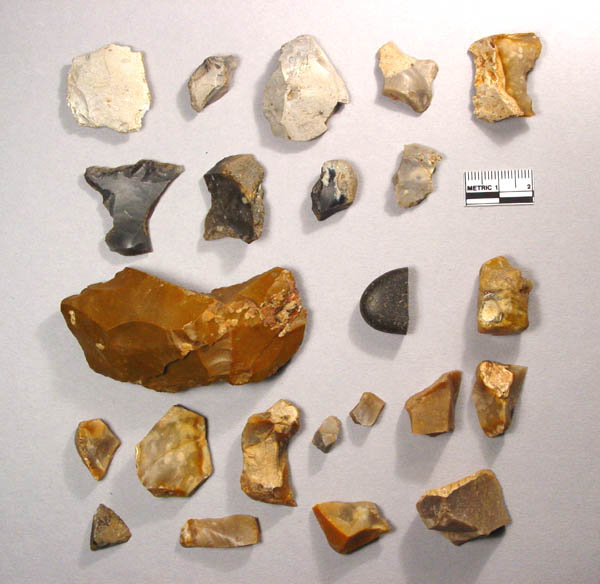
|
|
European flint strike-a-lights and ballast cobble debris. The largest reddish piece is a strike-a-light made from Pennsylvania jasper. Click to enlarge. |
The flint cobbles came to America as ship ballast. When the ships were at port and their hulls
were filled with cargo, the ballast stones were tossed out of the ship. The flint strike-a-lights were
struck against a hand-held tool called a firesteel, which directed sparks onto tinder, which caught fire.
One of the strike-a-lights was made from Pennsylvania jasper. It may have been fashioned from a
Native American tool found on the ground.
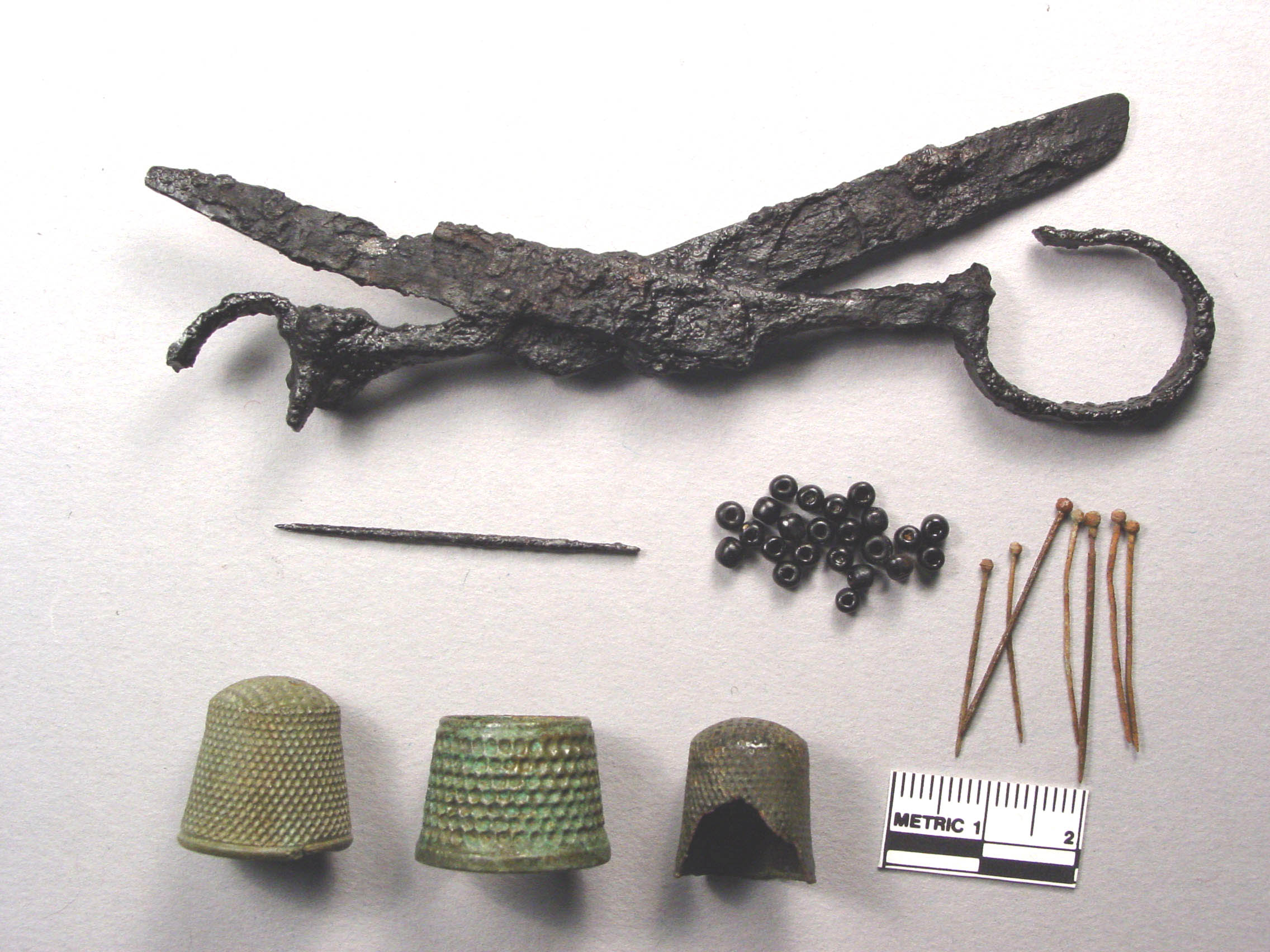
|
|
Scissors, a needle, glass beads, straight pins and thimbles. Click to enlarge. |
Most 18th-century Connecticut households engaged in some form of textile production and making and
mending clothing. In Thomas’s probate were ten sheep and eight lambs and “one pair of wool cards,”
which were used to comb, break and separate the wool fibers. There was also a “woolen wheel” and a “linen wheel”
for spinning yarn and thread, which also later appeared in Hannah’s
probate.
Numerous sewing-related artifacts
were recovered from the site including 444 straight pins, 12 needles, several pairs of scissors, and three thimbles.
Beadwork was also practiced at the household, and of the 125 beads from the site, most were small and various
shades of blue, red and green. Several larger blue beads were likely used as jewelry.
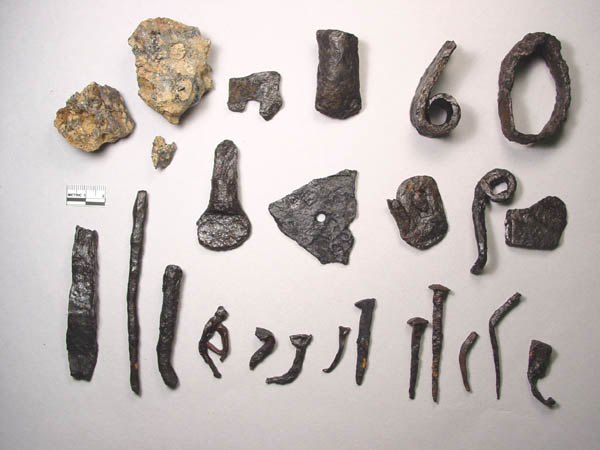
|
|
Slag, a fragment of a nail header, scrap iron, nails blanks and various types of nails, including T-head, L-head, rose-head, headless and shoeing nails. Click to enlarge. |
From the blacksmith shop attached to the back of the house came thousands of fragments of scrap iron,
slag (the waste from forging), scale (flakes of surface metal that come off during forging), and nails at
various stages of production including nail rod, nail blanks and finished nails.
All sorts of nail types were made at the forge including T-head, L-head, rose-head, headless, and shoeing nails.
Part of an apparent nail header was also found, which is a tool used to shape nail heads. Also from the forge area
were concentrations of clay mortar, which may have been used to build a stone forge base, and flint strike-a-lights
for making the forge fire. Based on the
distribution of forge-related artifacts, one possible layout of the forge area,
including the locations of the anvil, forge base and bellows, is projected below.
